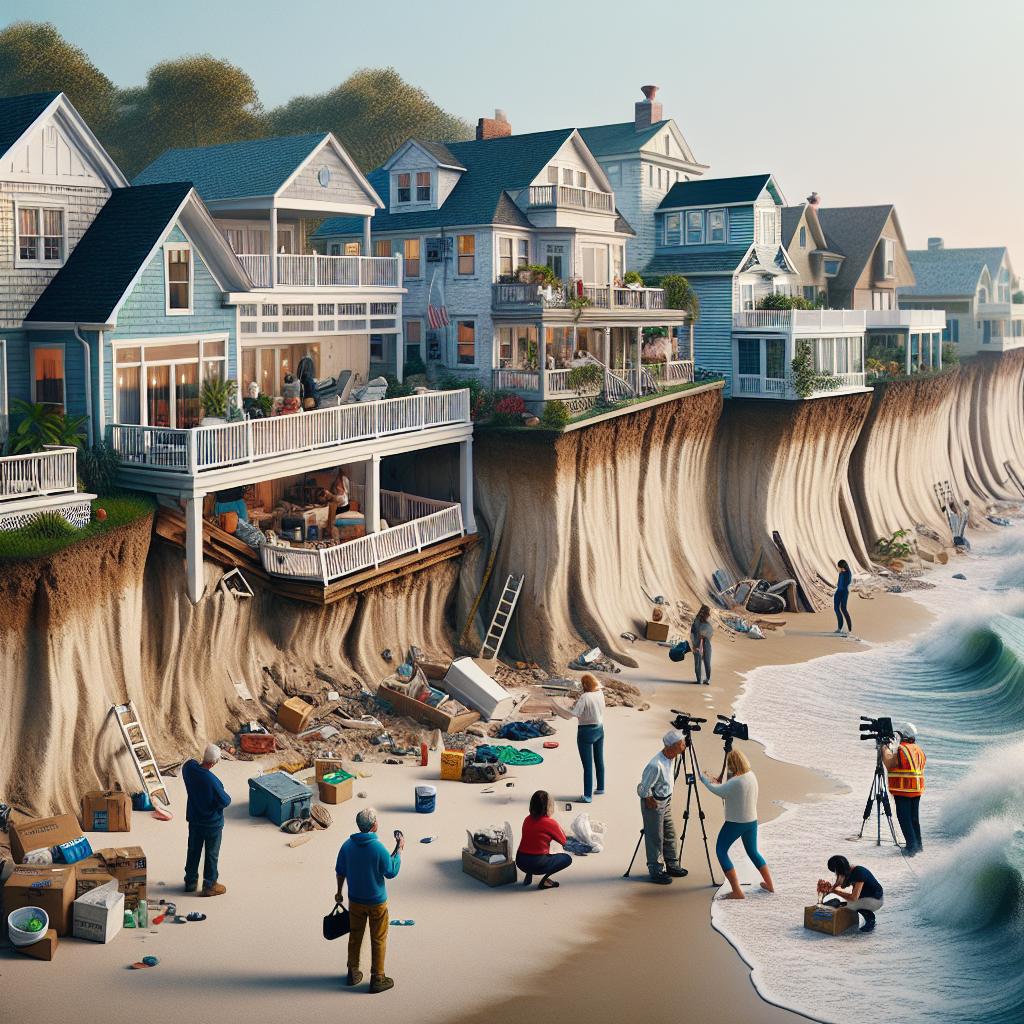

Coastal Erosion Affects Homes
In the serene coastal village of Rodanthe, North Carolina, the ocean is literally claiming homes, and it’s becoming a distressing reality for the small community of just about 200 residents. Since 2020, this idyllic vacation spot has seen ten houses tumble into the Atlantic waters, with three of those losses occurring just last week. The latest victim was a charming abode known as “Front Row Seats,” which met its fate on Tuesday afternoon when the wooden pilings could no longer withstand the relentless surf.
Experts and local officials agree that this deterioration is not simply the result of a single storm, but rather a slow-motion catastrophe that has been years in the making. Destined to be engulfed by the ocean, these homes are victims of beach erosion and climate change, which have gradually pushed the Atlantic closer to their front doors. Unlike hurricanes that barrel in and wreak havoc, erosion is a sneaky assailant, slowly but surely stealing the land away.
David Hallac, superintendent of the Cape Hatteras National Seashore, emphasizes that the coastal areas like Rodanthe are inherently dynamic. “We’re dealing with areas that were never ideal for development due to their ever-changing nature,” he explains. Ironically, many property owners in the past understood that they might have to move their homes as nature took its course. “In the past, homeowners might have relocated their houses away from the encroaching surf, but now we seem to have a misplaced sense of permanency,” Hallac stated.
Rodanthe, part of Hatteras Island—which stretches roughly 50 miles—has been undergoing erosion for decades. Take the famous Cape Hatteras Lighthouse, for instance. When it was constructed in 1870, it was a safe 1,500 feet from the ocean. Fast forward to 1919, and the sea was only 300 feet away, forcing the lighthouse to be relocated further inland.
Today, erosion rates can range from 10 to 15 feet per year, with Hallac noting that “every year, significant stretches of white sandy beach disappear.” Soon, the dunes that protect the homes fade into memory, leaving backyards frighteningly close to crashing waves. The wooden pilings that support these beach houses can be up to 15 feet deep, but without the sand around them, they become vulnerable, similar to a toothpick in wet sand.
When a house collapses, it doesn’t just sink; it sends debris washing along the shore, posing a danger to beachgoers and causing possible pollution from septic tanks. Recent reports suggest that one single home collapse can spread debris up to fifteen miles along the stunning coastline.
Rodanthe may be in a precarious situation, but many coastal regions in the U.S. are not far behind. Currently, 750 out of nearly 8,800 oceanfront properties in North Carolina are deemed at risk due to erosion, beckoning urgent questions about what can be done. Although rules governing coastal development are in place, they were established back in the 1970s when sea levels were much different.
Local officials, including Noah Gillam of Dare County, highlight the financial and logistical challenges of potential solutions. One option discussed involves dredging sand and relocating it to eroding beaches. This could cost an astounding $40 million—a number that is simply not feasible for Rodanthe’s small tax base. Other strategies may include buying out properties or dismantling them entirely, all of which come with hefty price tags.
In an effort to address the situation, U.S. Rep. Greg Murphy has introduced legislation aimed at freeing up federal flood insurance dollars to assist in demolishing or relocating homes that face imminent collapse. “This is not just a Rodanthe problem,” said Braxton Davis, director of the North Carolina Coastal Federation. “It’s a national issue driven by rising sea levels across coastlines and rivers.”
The unfolding narrative of Rodanthe is reflective of a much larger story of climate change and erosion in the United States. It poses a pressing reminder of the fragility of land amidst nature’s inexorable forces, leaving communities to navigate the complexities of protecting their homes while eying the relentless waves of change.
News Summary A 19-year-old from Waretown, New Jersey, has been arrested in connection with the…
News Summary The deportation of three young U.S. citizen children, including a 4-year-old battling cancer,…
News Summary DHS Secretary Kristi Noem experienced a shocking theft while enjoying dinner at Capital…
News Summary A ferryboat collision in Clearwater, Florida, resulted in one fatality and multiple injuries.…